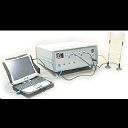Computer security researchers say that the GSM phones used by the majority of the world's mobile-phone users can be listened in on with just a few thousand dollars worth of hardware and some free open-source tools.
 In a presentation given Sunday at the Chaos Communication Conference in Berlin, researcher Karsten Nohl said that he had compiled 2 terabytes worth of data -- cracking tables that can be used as a kind of reverse phone-book to determine the encryption key used to secure a GSM (Global System for Mobile communications) telephone conversation or text message.
In a presentation given Sunday at the Chaos Communication Conference in Berlin, researcher Karsten Nohl said that he had compiled 2 terabytes worth of data -- cracking tables that can be used as a kind of reverse phone-book to determine the encryption key used to secure a GSM (Global System for Mobile communications) telephone conversation or text message.
While Nohl stopped short of releasing a GSM-cracking device -- that would be illegal in many countries, including the U.S. -- he said he divulged information that has been common knowledge in academic circles and made it "practically useable."
Intercepting mobile phone calls is illegal in many countries, including the U.S., but GSM-cracking tools are already available to law enforcement. Knoll believes that criminals are probably using them too. "We have just basically copied what you can already buy in a commercial product," he said.
The flaw lies in the 20-year-old encryption algorithm used by most carriers. It's a 64-bit cipher called A5/1 and it is simply too weak, according to Nohl. Using his tables, antennas, specialized software, and $30,000 worth of computing hardware to break the cipher, someone can crack the GSM encryption in real time and listen in on calls, he said. If the attacker was willing to wait a few minutes to record and crack the call, the total cost would be just a few thousand dollars, he said.
There are about 3.5 billion GSM phones worldwide, making up about 80 percent of the mobile market, according to data from the GSM Alliance, a communications industry association representing operators and phone-makers.
Because even discussing wiretapping tools can be illegal in the U.S., researchers have steered clear of this type of work. But after consulting lawyers with the Electronic Frontier Foundation, Nohl and his collaborators set upon a way of conclusively disclosing the flaws in the GSM system without --they believe -- breaking the law.
Last August they kicked off an open-source project to create the cracking tables -- something that would take a decent gaming computer about 10 years to compute -- and they have shown which open-source tools could be used to intercept messages, but they have stopped short of designing a device to intercept the messages. This is, however, something that a technically sophisticated hacker could figure out, Nohl said.
"I don't think anything we did was illegal," Knoll said. However, "using what we produced in certain circumstances would be illegal," he added.
Two years ago, hackers David Hulton and Steve Miller embarked on a very similar project, but they did not complete their work, Nohl said.
Knoll, who uses a BlackBerry GSM phone himself, says that the point of the research is to make it clear that encrypted GSM calls can be listened into. "I certainly use my phone differently than before, trying to keep confidential calls on encrypted lines instead," he said.
A spokeswoman with the GSM Association said that her group would be looking into the researchers' claims in the coming days and stressed that any type of mobile-phone eavesdropping would be illegal in many countries. "This isn't something that we take lightly," she said in an e-mail interview.
The group has developed a next-generation standard called A5/3 that is considered much more secure. That's the standard that is used on 3G networks to carry Internet traffic.
2 COMMENT(S)
7ag ibrahim el wadi3 | 5/5/2010
sure the egypt goverment is using that since years :) wala ih ya wade3mohammed | 5/6/2010
lol, I did not know that, but could be, properly they are just connected directly to the GSM network, they do not need to snoop into the call, they are a port-listener.ADD COMMENT